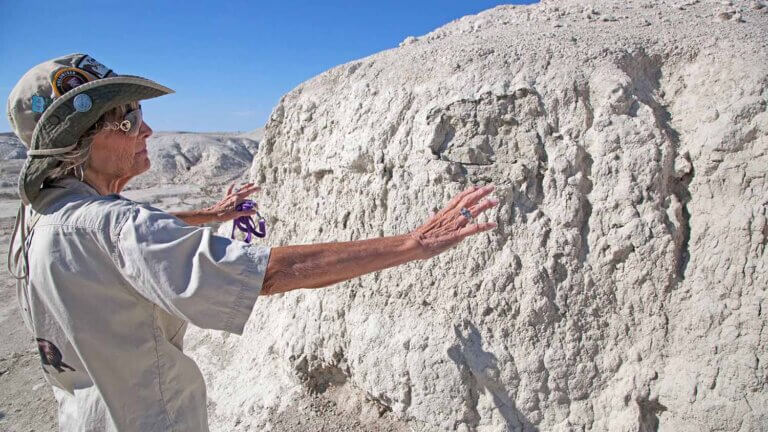
Tule Springs Fossil Beds National Monument
Would you have guessed that Nevada is home to the country’s only national monument dedicated solely to the preservation and appreciation of Ice Age fossils? It’s a bone-a fide fact! Designated in 2014, Tule Springs Fossil Beds National Monument is one of Nevada’s most exciting ways to get outside. Considered to be one of the greatest records of Ice Age fossils in the entire world, Tule Springs National Monument comprises 22,650 acres of land—a natural history wonderland located just 20 miles north of the Las Vegas Strip.
Discover dire wolves, Camelops, saber-toothed cats, Columbian mammoths, and more at Tule Springs Fossil Beds National Monument—one of the greatest records of Ice Age fossils on Earth.
Situated in the North Las Vegas valley, the Upper Las Vegas Wash was inhabited by an impressive array of prehistoric creatures during the Ice Age. Even though the valley has a very dry climate today, it was once a lush wetland that attracted all kinds of wildlife drawn to the area for food and water. As temperatures warmed, scientists believe that these prehistoric creatures became trapped in mud pits, perished, and over the course of millions of years, all fossilized in one big concentrated area.
Discover Ice Age Fossils
Any sort of fossil action is fascinating, but what makes Tule Springs so special is the number of fossils and the variety of species uncovered in the wash. Scientists believe this is perhaps the largest concentration of Ice Age fossils not just in the United States, but the entire world. Herds of Ice Age Columbian mammoths—the largest elephant species, with tusks spanning over six feet in length and molars the size of human heads—have been discovered at Tule Springs, seemingly untouched for tens of thousands of years and dating back to the Pleistocene Epoch.
American lions weighing more than 1,000 pounds, giant ground sloths the size of a car, extinct horses, and Camelops—larger versions of the camels we know today—have been discovered in the Tule Springs area. Even dire wolves, saber-tooth cats, ancient bison, and teratorn raptors called this extraordinary area home.
The area was also home to some of the earliest American Indian tribes, with the first inhabitants being ancestors of today’s Paiute more than a thousand years ago. Once lush and green, it would have been easy to see how Las Vegas got its name, which means “the meadows” in Spanish.
During the early 1960s, a major excavation called the “Big Dig” took place, where scientists initially uncovered an unimaginable amount of large animal fossils. In the 2000s, when the idea of developing the area for real estate fell through due to the Great Recession, the park area was finally protected by the National Park Service. Now, with fossil fragments estimated to be more than 100,000 years old, Tule Springs Fossil Beds National Monument is devoted to protecting and preserving these fascinating remnants of time.
Visiting Tule Springs Fossil Beds
When visiting Tule Springs Fossil Beds, visitors can check out the site of the “Big Dig,” and if you keep your eyes peeled, you might be lucky enough to spot a tusk or bone fragment from one of these paleontological gems. If you do find a fossil at Tule Springs, it’s important to leave the fossil where you found it (photos are OK!) and let park staff know about your discovery. Not only is it against federal regulations to disturb or take fossils from any National Park Service site, but that valuable paleontological information will be lost forever.
Wildlife still abounds at Tule Springs, too. Look for coyotes, jackrabbits, and even aquatic snails, along with desert flora like the rare Arctomecon, commonly known as bear or bear-paw poppies that used to densely cover the western part of the Mojave Desert.
Hours:
There is no visitor center at Tule Springs as of yet, and no amenities such as restrooms. In advance of your visit, get valuable information and education from Protectors of Tule Springs.
Tule Springs Fossil Beds National Monument is open year-round during daylight hours, from sunrise to sunset. Visits can be extra pleasant during the cooler months of fall, winter, and early spring.
Admission:
No fees or passes are currently required to access Tule Springs Fossil Beds National Monument.
This Location:

City
North Las VegasRegion
Southern Nevada











